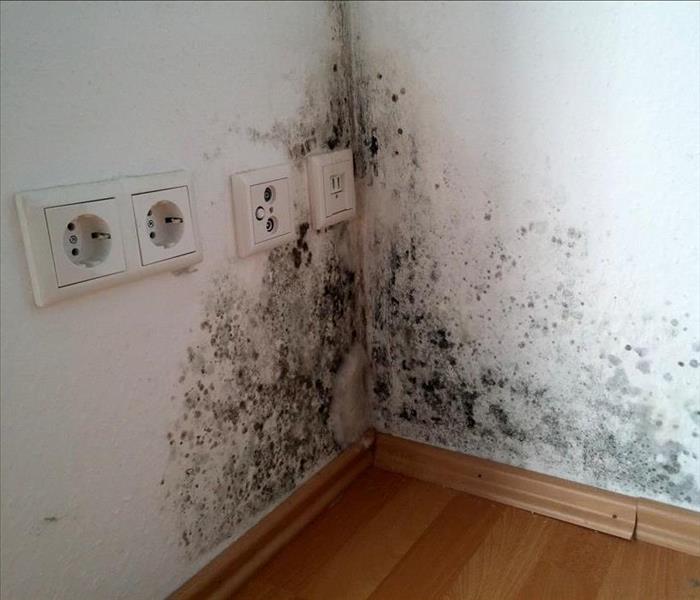Removing Persistent and Reoccurring Mold Growth
7/24/2021 (Permalink)
Getting Rid of Mold Growth That Is Persistent and Recurring
Incidents of mold growth in North Aurora, IL, that are persistent and reoccurring are oftentimes the result of high humidity conditions lingering behind after events of water damage. Even in relatively low-humidity areas of the country, the ambient conditions necessary to foster the spread of mold in your business can still be created in small spaces where water collects.
Discovering Common Water Problems
The following conditions may lead to significant molding due to their potential to create highly humid environments:
• Condensation from appliances: Small puddles may form when pipes on common appliances accumulate water droplets from condensation. Water heaters, refrigerators, freezers, air conditioners, and washing machines all have piping that may not be properly insulated and could cause puddling.
• Rainwater leaks: A leaky roof, door seal, or window seal can channel water into a store or office building. Check the upper and side portions of doors and windows for damaged seals, as well as the bottom seal.
• Damaged water pipes: Kitchens and bathrooms are the most obvious places to check for water leaks. Be sure to look for mold growth in areas that are difficult to access, such as the far corners underneath sinks and the piping behind toilets.
• Absorbent materials: Materials such as wood, carpet, and insulation stay saturated long after they have been in contact with water. In small and confined spaces these types of materials may allow for mold to grow unnoticed.
Repairing Water Sources and Removing Mold
Mold that reappears in the same area is a sign that water problems are causing the reoccurrences. Any place where water is present can create a micro-environment of high humidity, leading to pooling moisture and the right conditions to grow hyphae — the principal structure of spreading fungi. Stopping incidents of reoccurring mold growth requires the proper identification and repair of water leaks at their source and the handling of the existing mold by a professional service that specializes in its removal.





 24/7 Emergency Service
24/7 Emergency Service
